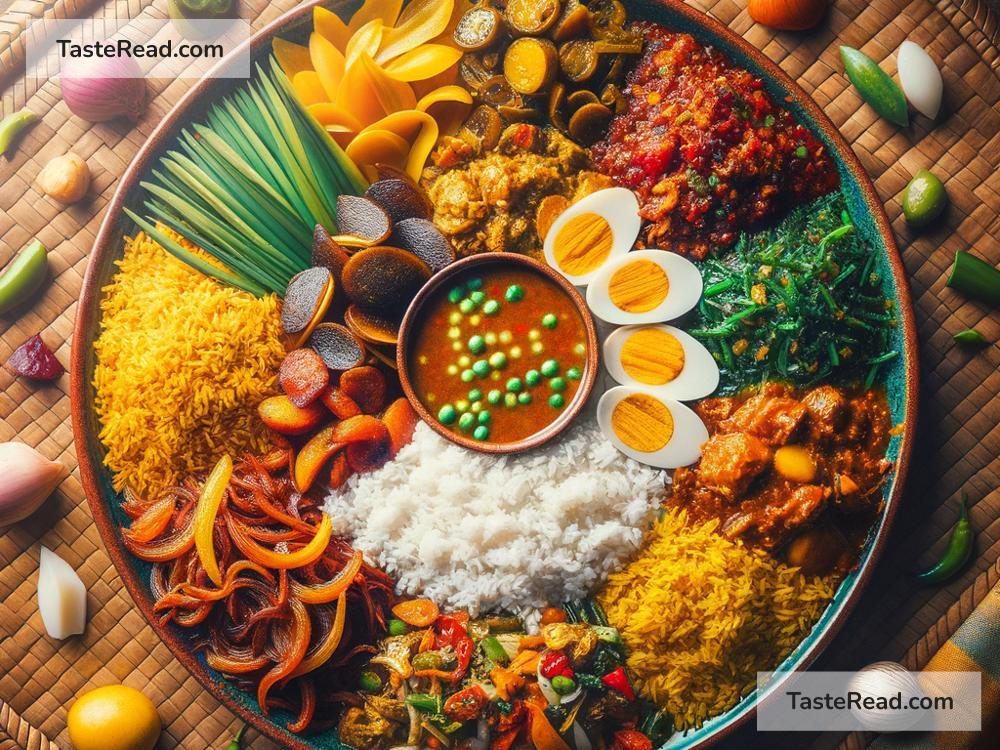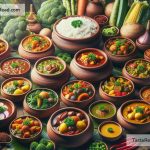Title: The Journey of Rice and Curry to Becoming Sri Lanka’s National Dish
Sri Lanka, a tropical island in the Indian Ocean, has a rich history and cultural tapestry that intertwines with its culinary traditions. Among the plethora of dishes it offers, there’s one that stands out both in popularity and significance – the Sri Lankan Rice and Curry. This meal is not just food; it represents Sri Lanka’s identity, showcasing the diversity, history, and culinary expertise of its people. But how did Rice and Curry become the national dish of Sri Lanka? Let’s delve into its journey.
Origins and Influences
To understand the prominence of Rice and Curry in Sri Lankan cuisine, one needs to look back into the island’s history. Sri Lanka’s strategic location made it a hub for ancient trade routes, leading to various cultural and culinary influences from India, the Middle East, Portugal, the Netherlands, and Britain. Despite these influences, Sri Lankans have managed to preserve their unique culinary identity, with Rice and Curry evolving as a staple dish.
Rice cultivation has deep roots in Sri Lankan society, dating back over 2,500 years. The ancient hydraulic civilization of Sri Lanka, with its sophisticated irrigation systems, enabled the cultivation of rice, making it the primary staple. Meanwhile, the island’s abundance of spices such as cinnamon, cardamom, and nutmeg, along with coconut, made curry a perfect complement to the rice.
Components of Rice and Curry
A traditional Sri Lankan Rice and Curry meal is a symphony of flavors, consisting of white or red rice surrounded by various curries, including a main protein (like chicken, fish, or beef), several vegetables, and even a leafy green. These are accompanied by flavorful sides like mallung (lightly cooked greens with coconut), papadum (crispy flatbread), and pickles or chutneys, adding layers of texture and taste to the meal.
The secret to the vibrant and complex flavors of the curry lies in the spice blends, known as curry powders, and the use of coconut milk. Each household and region have their versions, making Rice and Curry a dish with endless variations and a reflection of the island’s diversity.
Rice and Curry: A Symbol of Unity
In a country as diverse as Sri Lanka, with various ethnic groups and religions, food serves as a unifying force, and Rice and Curry is at the heart of this. The dish transcends cultural and social boundaries, being a common thread in celebrations, festivals, and daily life across the island. Whether in a humble village home or a bustling city restaurant, Rice and Curry is a symbol of Sri Lankan hospitality and communal living.
The Evolution of Rice and Curry
Over time, Rice and Curry has not only remained a traditional dish but also evolved, embracing modern influences while retaining its soul. In cities, one can find “short eats” (snacks) inspired by Rice and Curry flavors, and fusion dishes that incorporate elements of the dish in innovative ways. Despite these adaptations, the traditional Rice and Curry meal, with its rich flavors and communal serving, remains a cornerstone of Sri Lankan cuisine.
Conclusion: The Heart of Sri Lankan Cuisine
The journey of Rice and Curry to becoming the national dish of Sri Lanka is a testament to the island’s history, cultural diversity, and culinary expertise. It is a dish that has adapted and evolved, yet remains deeply rooted in the nation’s identity. For Sri Lankans, Rice and Curry is more than just a meal; it’s a celebration of their heritage and a daily reminder of the island’s bounty. Whether shared among family at home or enjoyed as street food, Rice and Curry encapsulates the essence of Sri Lankan cuisine and continues to be a beloved choice for both locals and visitors alike.
In exploring the story of Rice and Curry, we find not just a culinary tradition, but a narrative of unity, resilience, and the enduring spirit of a nation. As the dish continues to be passed down through generations, it carries with it the flavors, memories, and essence of Sri Lanka, making Rice and Curry a timeless symbol of the island’s rich cultural tapestry.


